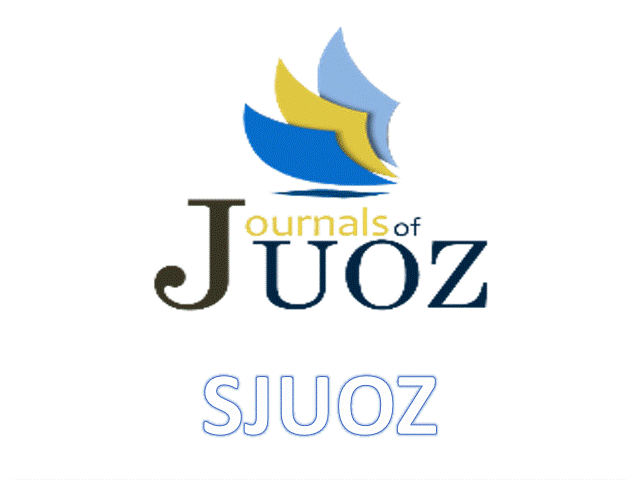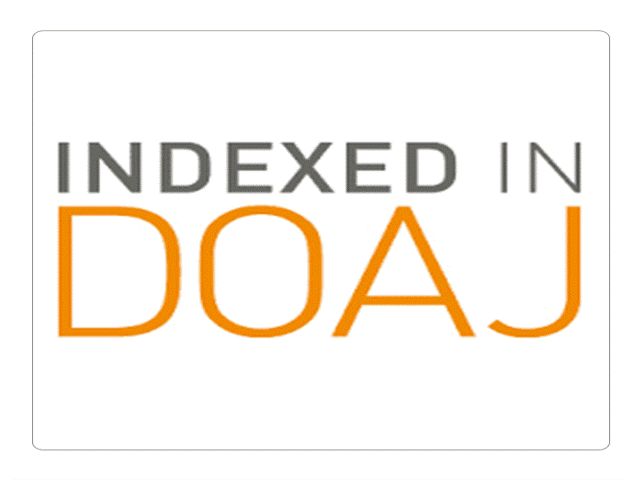Prevalence of Echinococcus Granulosus in Different Intermediate Hosts in Duhok Province, Kurdistan Region, Iraq.
DOI:
https://doi.org/10.25271/2018.6.1.379Keywords:
Hydatidosis, Cystic Echinococcosis, Echinococcus Granulosus Senso Lato, Cyst Location, Organ Involvements, Kurdistan-IraqAbstract
This study was carried out in Duhok provinces, Kurdistan Region/ Iraq from August; 2014 to December 2015.The study focused on the prevalence of CE in slaughtered animals. The total prevalence was 5.25% (11753/223436), with a high rate in sheep (4.25%), and low rates in goats and cattle (0.64% and 0.37%, respectively). With respect to abattoirs involved in the study, the highest prevalence was detected in Akre abattoir (8.21%) and the lowest in Amedy abattoir (4.09%). Among the infected animals, sheep in Akre abattoir recorded the highest prevalence, while cattle in Duhok abattoir recorded the lowest prevalence (7.57 and 0.1%, respectively). Males of sheep, goats and cattle showed higher prevalence (70.51, 63.62, and 92.06%, respectively). Regarding organ involvements, malesand females of cattle showed high liver involvement (63.13 and 84.62%, respectively), while males and females of sheep (62.21 and 60.31%, respectively) and goats (60.59 and 54.51%, respectively) showed high lungs involvements.
Downloads
References
Al-Ani, W. A. T.(2012). Hydatidosis of slaughtered sheep in Baghdad City; bacteriological study of infected hydatid cyst fluid. Mustansiriya Medical Journal, 11. 45-48.
Al-Barwari, S.E.; Saeed, I.S.; Khalid, W. and Al-Harmni, K. I. (1991). Human hydatidosis in Arbil, N. Iraq. Journal of Islamic Academy of Sciences. 4. 330-335.
AL-Bosely, A. R. I. (2014). Studies on epidemiology of hydatid cysts isolated from different intermediate hosts in Zakho, Duhok province, Kurdistan region, Iraq. M. Sc. Thesis, Faculty of Science. University of Zakho.
Al-Fatalawei, M.A.A. (2002). Epidemiological and biological study of hydatidosis in Al-Qadisia governorate. M.Sc. Thesis, College of Veterinary Medicine, University of Baghdad, Iraq.
Baban, M. R. A. (1990). Study on epidemiology of hydatid cysts in Al-Tameem, Dyala and Thi-Qar. M.Sc. Thesis. College of Education, Salahaddin University.
Babero, B. B.; Al-Dabagh, M. A.; Al-Saffar, A. S. and Frozan, M. A. (1963). The Zoonosis of Animal Parasites in Iraq. XII. The Dog as a Reservoir for Human Cestode Infections. J. Fac. Meet., 5: 149-58.
Bajalan, M.M. (2006). Prevalence of Echinococcosis in stray dogs and slaughtered livestock in Kalar district/Sulaimaniyah province/Kurdistan Iraq. M. Sc. Thesis, College of Veterinary Medicine, Univ. of Baghdad.
Casulli, A.; Manfredi, M. T.; La Rosa, G.; Cerbo, A. R.;Genchi, C. and Pozio, E. (2008). Echinococcusortleppiand E. granulosus G1, G2 and G3 genotypes in Italian bovines. Vet. Parasitol., 155: 168-72.
Daryani, A.; Alaei, R. ; Arab, R. ; Sharif, M.;Dehghan, M. H. and Ziaei, H. (2006). Prevalence of Hydatid Cyst in Slaughtered Animals in Northwest Iran. Journal of Animal and Veterinary Advances, 5. 330-334
Deplazes P; Rinaldi, L.; Alvarez Rojas, C.A.; Torgerson, P.R.; Harandi, M.F.; Romig, T.; Antolova, D.; Schurer, J.M.; Lahmar, S.; Cringoli, G.; Magambo ,J.; Thompson, R.C. and Jenkins, E.J. (2017) Global Distribution of Alveolar and Cystic Echinococcosis. .Adv. Parasitol., 95:315-493.
Eckert, J and Thompson, RCA. (1997).Intraspecific variation of Echinococcusgranulosus and related species with emphasis on their infectivity to humans. Acta Tropica. 64: 19-34.
Eckert, J. and Deplazes, P. (2004). Biological, epidemiological, and clinical aspects of echinococcosis, a zoonosis of increasing concern. Clin. Microbiol. Rev., 17: 107-35.
Ghaffar, N. M. (2008). Prevalence of hydatidosis in livestock slaughtered at Duhok abattoir of Kurdistan Region of Iraq. M.Sc. Thesis Coll.ofVet.Med.Univ.ofDohuk.
Hama, A. A. (2013). Epidemiological study and molecular characterization of Echinococcus granulosus in Suleimani province Kurdistan- Iraq. PhD. Thesis. Faculty of Science, Zakho University.
Hama, A. A.; Hassan, Z. I.; Salih Mero, WM.; Interisano, M.; Boufana, B. and Casulli, A. (2015). A morphologically unusual Echinococcus granulosus (G1 genotype) cyst in a cow from Kurdistan-Iraq. Epidemiology (sunnyvale), 5: 2161-1165.
Hassan, Z. I.; Mero, W. M. S.; Casulli, A.; Interisano, M., and Boufana, B. (2016). Epidemiological Study of Cystic Echinococcosis In Sheep, Cattle and Goats In Erbil Province, JUOZ, 4 A-S: 43
Ibrahim, M. M. (2010). Study of cystic echinococcosis in slaughtered animals in Al Baha region, Saudi Arabia: interaction between some biotic and abiotic factors. Acta Tropica. 113: 26-33.
Kadir, M. A., and S. A. Rasheed. (2008). "Prevalence of some parasitic helminths among slaughtered ruminants in Kirkuk slaughter house, Kirkuk, Iraq." Iraqi J. Vet. Sci., 22.2: 81-85.
Kamhawi, S.; Hijjawi, N.; Abu-Ghazaleh, A.; Abbas, M.; (2009): Prevalence of hydatid cysts in livestock from five regions in Jordan. Ann. Trop. Med. Parasitol., 89: 621–629.
Kebede, N.; Mekonnen, H.;Wossene, A., and Tilahun, G. (2009). Hydatidosis of slaughtered cattle in WolaitaSodo Abattoir, southern Ethiopia. Trop. Anim. Health Prod., 41: 629-33.
Khalf, M.S; Al–Faham, M.A.; Al-Taie, L.H., and Alhussian, H.A. (2014). Genotyping of Echinococcusgranulosusin Samples of Iraqi Patients. IOSR Journal of Pharmacy and Biological Sciences, 9: 06-10.
Meerkhan, A. A. (2011). Biochemical studies on hydatid cysts of Echinococcusgranulosus isolated from different intermediate host (sheep, goat, cows and human). M. Sc. Thesis, College of Education, University of Zakho, Iraq.
Meerkhan, A. A. and Abdullah, A. M. (2012). The epidemiology of hydatidosis in different slaughtered animals in Duhok abattoir, Kurdistan Region of Iraq Second international conference. Bali (Indonesia).4: 45-48.
Meerkhan, A. A. and Mero, W. M.S. (2013). Determination of lipids and glucose content in hydatid cysts of Echinococcusgranulosus isolated from different intermediate hosts (sheep, goats, cattle and human) tissues.JUOZ,1A, 1:50-57
Mero, W.M.S.; Jubrael, J.M.S., and Hama, A.A.(2014) Prevalence of Hydatid Disease among slaughtered animals in Slemani Province/ Kurdistan-Iraq. JUOZ, 2: 33-38.
Mohsen, S. S.; Jiyad, A. L.; and Mohamad, R. N. (2009) Genetic Variation for epidemiological human Echinococcusgranulosus from different regions of Iraq. AL-Qadisiya Journal of Veterinary Medicine Science, 8: 55-62.
Molan, A. L., and Saida, L. A. (1989). Echinococcosis in Iraq: Prevalence of Echinococcus granulosus In Stray Dogs in Arbil Province. Japanese Journal of Medical Science and Biology, 42: 137-141.
Romig, T. (2003). Epidemiology of echinococcosis. Langen becks Arch Surg., 388: 209-17.
Saeed, I.; Kapel, C.;Saida, L.A.; Willingham, L. and Nansen, P. (2000). Epidemiology of Echinococcusgranulosus in Arbil province, northern Iraq, 1990–1998. Journal of helminthology. 74: 83-88.
Saida, L. A., andNouraddin, A. S. (2011) "Epidemiological study of cystic echinococcosis in man and slaughtered Animals in Erbil province, Kurdistan Regional-Iraq." Tikrit Journal of Pure Science, 16 (4) : 45-50.
Sargali, A. A and Mero, W. M.S.(2013).Epidemiological Study of Hydatid Cyst of Echinococcus granulosus Isolated from Sheep and Goats in Duhok Province, Kurdistan Region of Iraq. J.U.O Z., 1 A: 38-43.
Schmidt, G.D., and Roberts, L.S. (2000). Tapeworms (Chapter 21), ed. Foundations of parasitology. Mosby College Publishing, 41.
Senekji, H. A., and Beattie, C.P. (1940). The incidence of hydatid disease in Iraq. Transactions of the Royal Society of Tropical Medicine and Hygiene. 33: 461-462.
Tashani, O.A, Zhang, L.H.; Boufana, B.;Jegi, A., and McManus, D.P. (2002). Epidemiology and strain characteristics of Echinococcus granulosus in the Benghazi area of eastern Libya. Annals of Tropical Medicine & Parasitology, 96: 369-381.
Temam, B. D., and Mukarim, A. A. (2016). Study on Prevalence and Monetary Loss Attributed to Hydatidosis in Cattle Slaughtered at Jimma Municipal Abattoir, Southwestern Ethiopia. Global Journal of Medical Research. 16.
Thompson, R.C. A., and McManus, D. P. (2002). Towards a taxonomic revision of the genus Echinococcus. Trends in Parasitology. 18. 452-457.
Downloads
Published
How to Cite
Issue
Section
License
Copyright (c) 2018 Azad A. Meerkhan, Wijdan M.S. Mero

This work is licensed under a Creative Commons Attribution 4.0 International License.
Authors who publish with this journal agree to the following terms:
- Authors retain copyright and grant the journal right of first publication with the work simultaneously licensed under a Creative Commons Attribution License [CC BY-NC-SA 4.0] that allows others to share the work with an acknowledgment of the work's authorship and initial publication in this journal.
- Authors are able to enter into separate, additional contractual arrangements for the non-exclusive distribution of the journal's published version of the work, with an acknowledgment of its initial publication in this journal.
- Authors are permitted and encouraged to post their work online.








